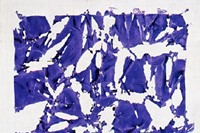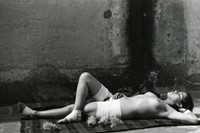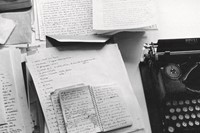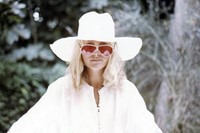The feted French designer and gallerist offers a rare insight into her expansive collection of art — think: Basquiat, Ryan McGinley and more
In the 80s, Agnès b met Jean-Michel Basquiat over a pizza in the café across from her shop in Paris and one of his activist artworks became the first piece in her now expansive art collection. Two decades later, she was introduced to Ryan McGinley over a bottle of vodka at a party in downtown New York, and became the first person to bring the then unknown photographer’s work to France. Stories like these flow effortlessly and unselfconsciously from the animated 73-year-old gallerist and fashion designer – also a filmmaker, political activist, environmentalist and all-around cultural icon.
This summer, 'Un regard sur la collection d'Agnès B' — a diverse selection from Agnès’s vast collection of art, is being exhibited at the Lille Métropole Museum of Modern, Contemporary and Outsider Art (LaM), a hidden modernist treasure in the leafy outskirts of the city, set within a sculpture park of Picasso’s and Calder’s. Spanning Louise Bourgois, Futura, Harmony Korine, Kenneth Anger, Gilbert & George and the aforementioned Basquiat, among many others, the exhibition offers a compelling insight into Agnès’s friendship circle and her predilictation for art that celebrates youth.

Agne’s fascination might have something to do with the fact that her own youth was short-lived. After a privileged upbringing in Versailles, at 16 she was engaged to Christian Bourgois, the notable French publisher who released the works of the Beat authors, among others. It was the 60s and she would wait for him near his office after work at the Café du Flore, with Sartre and de Beauvoir at the next table over. At 17, Agnès interned at the Parisian gallery of Jean Fournier, and worked on the catalogue of French artist Simon Hantaï, whose work now hangs in her exhibition. By the time Agnès was 20, she was divorced with twins and had very little money. She ended up taking a job at ELLE magazine to pay the bills, hired for her innate flare for fashion, as evidenced by her eclectic flea market ensembles.
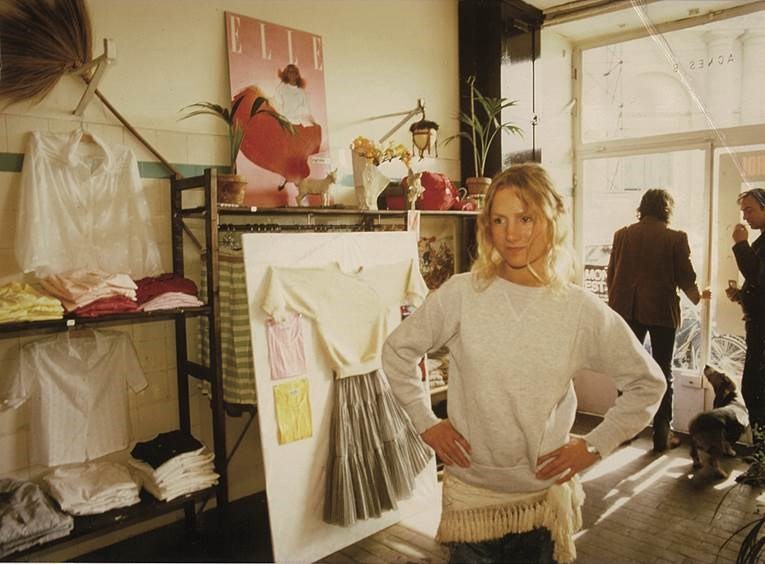
In 1975, Agnès opened her own shop, as much a bohemian meeting place as a boutique. Records from artists like The Clash and David Bowie would be playing, and the walls were covered in chalk handwriting - ideas from the political discussions that she and her left-wing friends would gather for, as well as posters from their favourite films by Godard, Wenders, Jarmusch and Cassavetes. Then, in 1983, Agnès opened up her gallery and bookshop, Galerie du Jour – her friends, writers, artists, filmmakers contributed lists of their favourite books to be sold. “I was new to this world of art, a stylist starting a gallery was not very of the times,” she tells AnOther, “It was not something that people did.” Her dream was to show paintings, sculptures and photographs, while making art available though silkscreens, engravings and prints, alongside selling books, food and providing a space for lively discussions. Agnès speaks casually of friends from the past, like seminal 20th century intellectuals Felix Guattari and Giles Deluze, as well as Keith Haring and Patti Smith. These days she counts cult filmmaker and artist Jonas Mekas and Harmony Korine as close confidents.
The LaM exhibition only covers 5% of Agnès's art collection – some pieces, including the Basquiat’s, were removed from her own home for the exhibition. Agnès began to buy work recently, much of the art in her collection has been given to her as gifts.
Agnès b. granted AnOther a rare interview to speak about the artworks on show at the exhibition in Lille, here we gather her insights, drawn from her conversation with AnOther and her interview with Hans-Ulrich Obrist in the book, Collection agnès b.

On youth...
"Youth is very important in my collection. If you look at these people from different times, different cities, there is an uncertain look. I love young people, I like the doubt. The older people they are more sure of everything, but they don't know who they are going to be yet. I like this questioning. I spend my time with young artists, always. I love to exchange with them. I love the eye of these artists."
"I believe that some art will never grow old, like Jonas’, Bouabré’s or Glissant’s. Those artists have the spirit of constant discovery and are always questioning themselves. Those are the ones who interest me, even thought hey are 75 or 80 years old. They have kept hold of their childhood, adolescence and freedom.… I have many works on youth and the freedom of youth and adolescence."
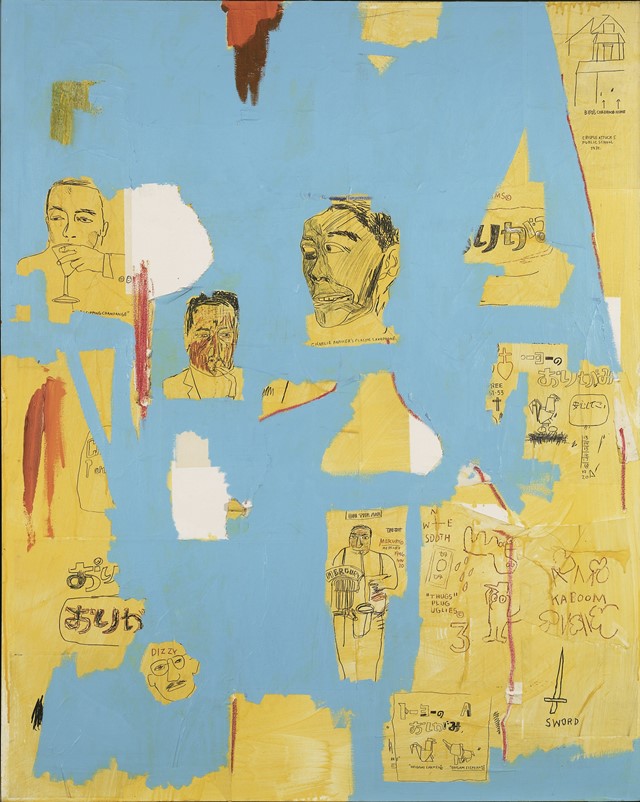
On Basquiat…
"I was introduced to Jean-Michel Basquiat at his last exhibition at the Yvon Lambert gallery in spring 1986. He was magnificent, with his hair up in three clumps, one in the middle and one on each side, like in Warhol’s polaroid. He was wearing a brown suit. All eyes were on him. Then he said to me, 'So that’s you!' When I left the gallery quarter of an hour later, someone called to me from the restaurant opposite – 'Agnès, Agnès!' He was waiting for me. We talked for two hours. I forgot my invitation to dinner with my friend Jean-Charles de Castelbajac. A few months later, I found out that he had died. I was so upset."
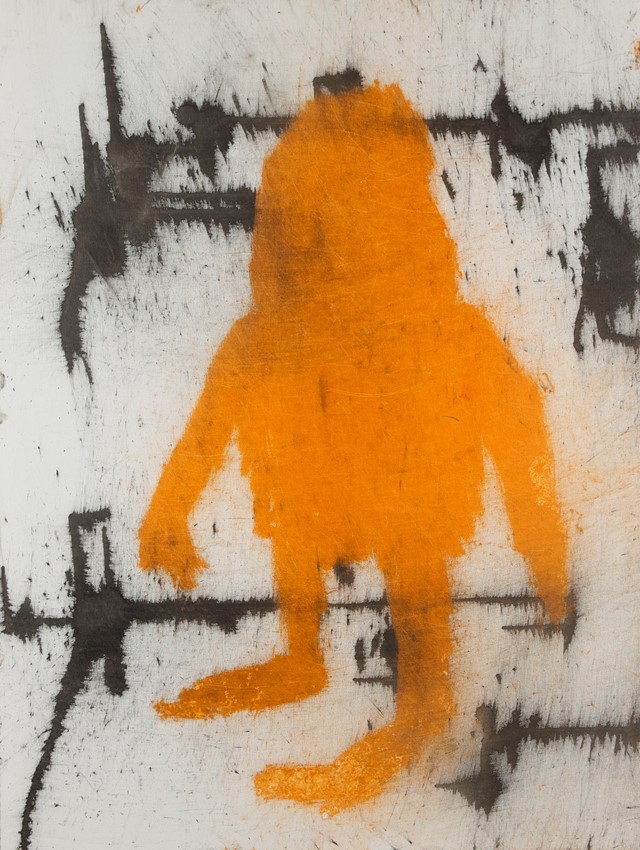
On Harmony Korine...
"I have an infinite love and admiration for Harmony. He is so clever, so funny, and I think we agree a lot about what we are looking at. We like the same music. He introduced me to Nick Drake, for instance."
"I met him in Venice when he was showing Julien Donkey-Boy. It is beautiful. We met in the corridor in Hotel des Bain, and we started talking and became friends. It took like 20 minutes, and then we have always kept in touch."
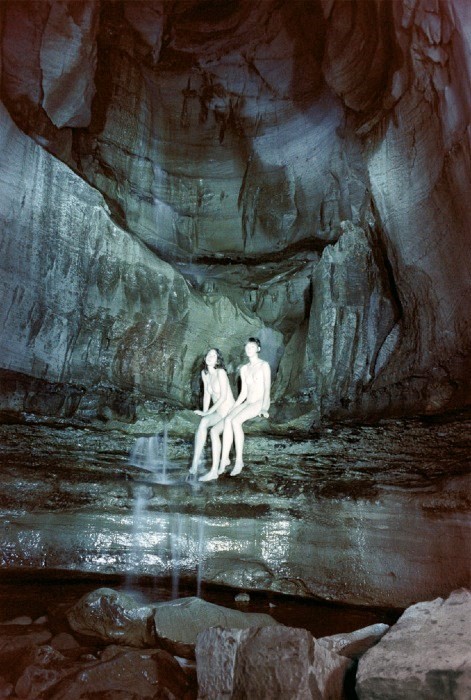
On Ryan McGinley...
"I met Ryan at a party, we drank vodka, and he took ten photographs from his pocket to show me. I was the first one exhibiting his work, I had a big exhibition in LA. I became friends with Craig Costello and Ryan McGuinness, and all this group. I became very close to them, and I showed them Paris. The New New York Scene was the name of the show."
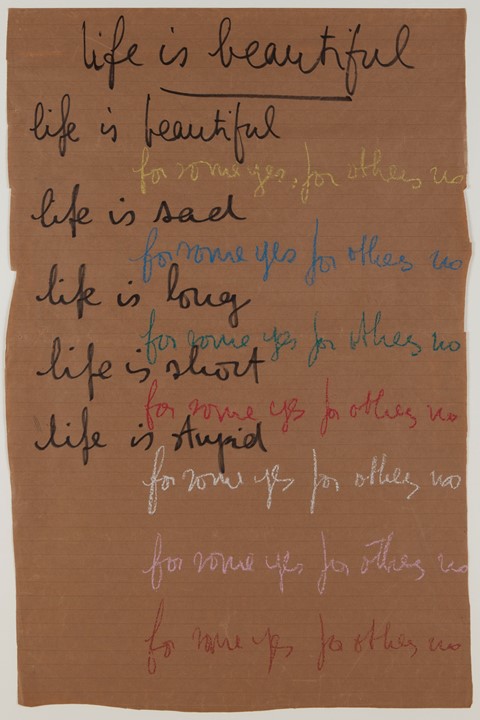
On Robert Filliou (whose handwritten works begin each room of the exhibition)…
"He was an artist who had a lot of humour and a love for people, for human beings. He was very touched by people, he was very funny, he was a philosopher, and I love what he says in each sentence. I met with his widow and we (the brand agnès b.) did a woolen scarf, with his phrase 'On verra bien' or 'we will see.' I love this phrase. We will see."
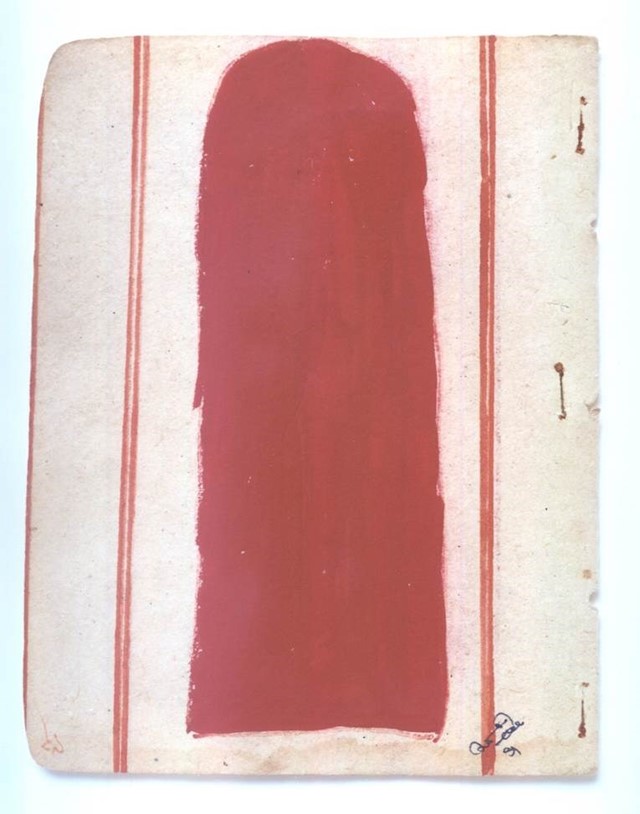
On Vyakul...
"Vyakul worked on his spiritual tantric drawings by night, in dim light, dipping his finger in pigments then transferring the colour to the paper."
"He had the softest hands I've ever touched. When I met him, he was a beautiful old man, and he took my hand, and he had such a soft hand. He was painting at night, in the darkness, with a candle. It's very spiritual, and I love his work."
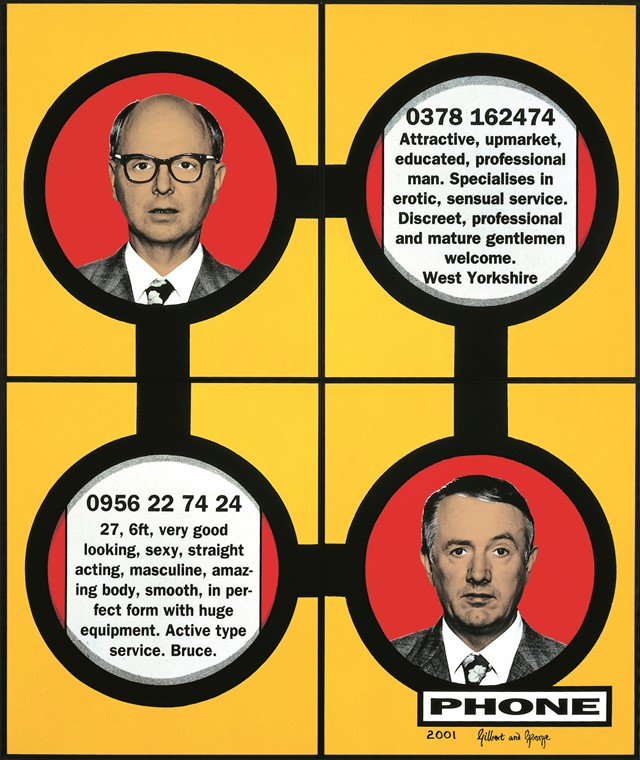
On Gilbert & George…
"I love Gilbert & George, such beautiful artists, they are very political and social. I love them as human beings and I love them as artists. They always ask me, 'What do you think of our new suits, Agnès?', and I say, 'They're beautiful.' When they had the show six months ago, I bought a piece and I asked if I could do a dress with it, and they said, 'Yes, do it, but we just want to have some of them for us.' Now the dress will come out in September."
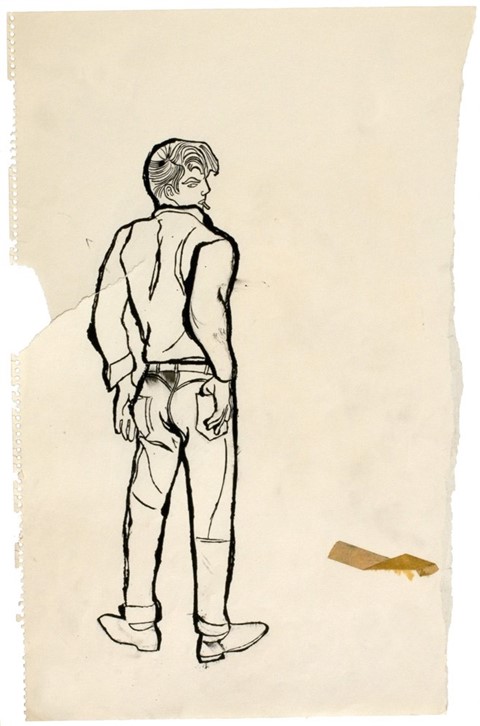
On what she looks for in a piece of art...
"I look for emotion, I look for sensations, I look for experimentation in a piece of art. Very often there are all these things."
On politics in art…
"I think it's very important that art talks about political activism sometimes. Some artists in other countries work more politically. People from Palestine, people from China too. They can be political. But in France the political dimension is quite rare now."
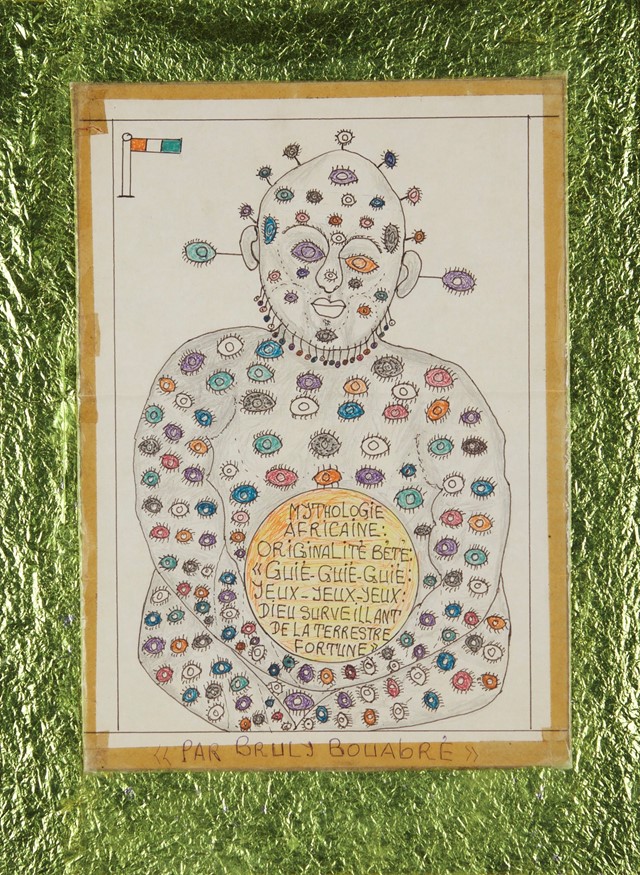
On Frédéric Bruly Bouabré…
"(When) I met Bouabré (at the exhibition he organised at the American Cultural Centre)… he was wearing a little brown suit, sitting on a radiator with his legs dangling. Everyone passed in front of him without even saying hello. No one knew it was him… I have exhibited his works and I have the honour to represent him. I also have numerous drawings of his, including the magnificent Femmes du Monde, drawings of women all wearing their national flag."
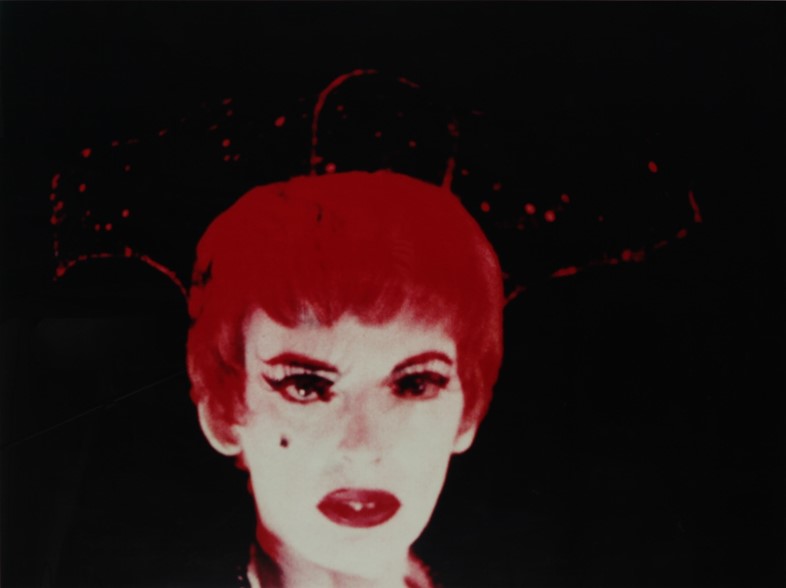
On Kenneth Anger…
"When I was married to Christian Bourgois, I used to see Kenneth arrive at the (Café du) Flore dressed in leathers like a biker, looking magnificent with his angelic face and his short brown fringe over his forehead. An ‘anger biker’. Back then, he called me Agneau [Lamb], like Christian, and my parents as well. He sent me some photographs from his extraordinary private museum for the book. I had never seen anything like it before."
On losing artists to bigger galleries...
"It's a great privilege to be able to show artists work. In a way you expose your taste, you expose yourself at the same time. Because it's new choice, often people don't know the artist, and then they become know afterwards. It's very encouraging for me. But after they go to other galleries. They go.(sighs) But Yvon Lambert was saying, (laughing) 'You discover them, Agnès, and then we do the work!'"

